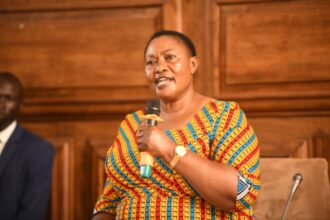Humanity is waging war on nature. Nature always strikes back – and it is already doing so with growing force and anger. This is evident in the glaring effects of climate change including rising temperatures, prolonged droughts, floods which affect crop production and lead to crop failure, low yields, loss of income to farmers, food insecurity, hunger and starvation.
These occurrences affect the achievement of the sustainable development goals and particularly efforts to end poverty and hunger. It is against this background that the United Nations Development Programme (UNDP), the Ministry of Agriculture, Animal Industry and Fisheries supported by the Common Market for Eastern and Southern Africa (COMESA) started the “Enhancing Resilience of Agricultural Landscapes and Value Chains in Eastern Uganda” project to promote Climate Smart Agricultural (CSA) best practices that farmers can adopt to create resilience under such conditions.
Implemented in the districts of Kamuli, Kaliro, Buyende, Bugiri, Busia, Budaka, and Namutumba between January 2018 and December 2021, the project sought to increase land productivity through promoting conservation of soil and water resources, building capacities of farmers, school pupils and extension officers at Local Government levels and strengthening resilience to climate change and increasing the number of farmers using CSA practices.
Project benefits
The project has had multiple benefits. Prior to the project, farmers in Bulondo Village, Kamuli district were experiencing food insecurity, poverty and prolonged drought. This has been mitigated thanks to the adoption of CSA practices.
“From the project, I learnt of many CSA methods and technologies, and I chose to start with permanent planting basins. Because these are deep, they collect and save water for the plants, prevent any runoff water from leaving the garden thereby trapping any nutrients that may be running with it and traps it in the basins. This helps the crops to grow healthy even when there are low levels of rainfall,” said Sharifa Ntono, a youth farmer and President of Young Generation Bandela Farmers Centre International, based in Bulondo village.
Ntono, who has been with the project since its inception in 2018, adds that many other farmers who have embraced CSA practices are harvesting more yields compared to those that did not. Before the adoption of permanent planting basins, Ntono harvested 300-500kg of maize per acre but when she used permanent planting basins, she is now harvesting between 1,500-3,000kg.
Solution to the scarce rains
Yet Ntonto is not alone. In Namutumba, a district known for irregular rains punctuated by a series of droughts and sandy soils which affect crop production because they don’t conserve water for long, CSA approaches like point application of organic fertilizers and use of rippers have helped farmers escape dry spells, expand existing crop acreages, and commercialize maize production.
The use of rip lines has been a game changer in this area and has helped farmers plant early given that they are made in the dry season before the start of planting rains to harvest and conserve rainwater as soon as it comes. This helps crops to escape short season soil moisture deficits. The rip lines enable plant roots to grow deeper into the soil and utilize the stored dry season soil moisture to meet crop water requirements.
Use of the tractor drawn rippers to make rip lines and herbicides for weed control has made land preparation, commercialization, planting and weed control work easier and enabled farmers to plant early and expand acreages cultivated. These practices have enabled farmer engagement in large scale production and increased crop production.
A combination of permanent planting basins, rippers, contour bands, and mulching have reduced soil erosion in the area. According to Moses Kidangole, a maize and soya beans farmer and chairperson of Bukenga Akanabala Farmers’ Cooperative Society, Bugobi Town Council, Namutumba District, nothing compares to CSA practices when it comes to increasing crop productivity.
“For me I don’t know what our great grandchildren will eat if they don’t adopt CSA. It is only CSA that can improve crop production, improve food security and incomes to farmers in Namutumba,”. Rippers have transformed Kidangole’s farming capacity from subsistence to commercial agriculture.
Good feeding improves learning and the performance of schools
In Budaka district, where lack of food was one of the causes of school dropouts and poor academic performance, the project has helped improve school feeding programmes. The availability of food for learners improved school performance because the children did not have hunger as the reason to keep away from school.
At Suni Primary School, one of the benefiting schools, project activities have scaled up food production according to David Mbayo, the Secretary of the CSA Club and Director of Studies. He says that the USD 10,000 grant the school received as part of the project has enabled the school to fence off six acres of school land to prevent theft and animal grazing and also procured all farm input required to start the school garden.
As a result, Mbayo says that the recent re-opening of schools found them ready because they had enough food in storage. He revealed that even during the closure of the schools due to COVID-19, the school continued to farm with the pupils from the neighborhood and cultivated maize, potatoes and vegetables. These pupils have in turn taught their parents how to use CSA technologies thus creating complete cycle of food security.
Do you have a story in your community or an opinion to share with us: Email us at Submit an Article








